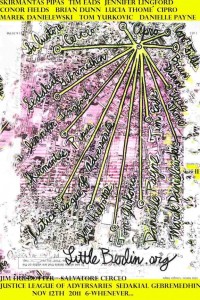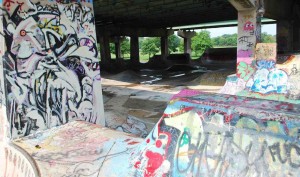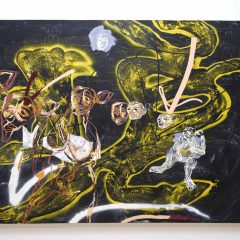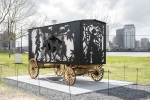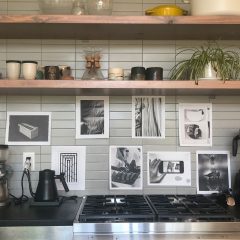On a fair weather First Friday, Old City bustles with galleries full of people and streets lined with craft vendors, musicians and performers. It’s positively festive. But every day across Philadelphia, artist-run collectives present a different art scene that in many ways is more exciting. In the last five years, Little Berlin, Extra Extra and other artist-run spaces have sprouted up in neighborhoods such as Kensington and Chinatown, where rents are cheap and raw spaces lend themselves to edgy experimental art. This is a gritty scene run by young people who want to do it themselves. The artists know each other and often do collaborative programming; they look to each other for inspiration and advice. It’s a collegial and competitive community, but not cutthroat. What’s common to these groups is their sense of spontaneity, of operating by the seat of the pants and without a net.
It takes a village
Little Berlin’s “The Western Lands” will likely be the city’s most radical exhibit this month. The show, which opens Nov. 12, was organized by member Tyler Kline, a longtime skateboarder with a streak of Southern gothic (he grew up in a small town near Atlanta) and a 2011 MFA graduate of Pennsylvania Academy of the Fine Arts.
The show’s title is a reference to the third book in William S. Burroughs’ apocalyptic “Red Night” trilogy. The collaborative’s installation by 15 artists will create a kind of village within the gallery’s larger building in Kensington, according to Kline. “It’s parallel to Occupy Philly but less utilitarian and more arty, for lack of a better word.”
Kline invited artists he knew, or knew of, to submit work for the show. He is using cardboard and tarp to create a maze of walls onto which street art – posters and stickers – will be pasted. Among the displays will be Tim Eads’ mechanical painting machine, Danielle Payne’s psychedelic videos and Jennifer Lingford’s non-edible baked goods. There will be live music and video projections at the opening by Justice League of Adversaries. The work will be installed in a spirit of collaboration with ownership of works remaining fluid in the arty village.
Many collectives use the Internet to find artists or get ideas for their exhibits. As 20-somethings who have grown up using computers, young artists are fascinated by the Internet as a topic: its global reach, democratic nature and openness. Extra Extra – whose members moved to Philadelphia after graduating from Maryland Institute College of Art – explained their Web-love in a recent interview.
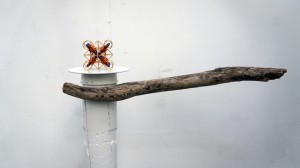
Completing each other’s sentences, Joe Lacina, Derek Frech and Dan Wallace said, “We’ve been logged in to the Internet since we were kids. We grew up in a chatroom. That’s true. Everyone in our generation knows their first AOL chat name – that’s just part of living as a 20-something.”
This month, Extra Extra presents “Energy Pangea” by Iain Ball, an exhibit that mixes ideas about corporate mining of resources and Internet mining of ideas.
Collective beginnings
Philadelphia has been an incubator for collectives since at least 1975, with the founding of Nexus. Vox Populi came along in 1988, and in 1997, the current boom of young artist-run galleries kicked off with the opening of Space 1026.
Working from a similar “share and share alike” spirit, new cooperative work and tool share spaces such as West Philly Tool Library, NextFab (for digital fabrication) and the Sculpture Gym (now being planned) have also contributed to this vital arts scene.
In 2007, the Institute of Contemporary Art put its weight behind the burgeoning collective movement with its monthlong exhibit “Locally Localized Gravity.” The Institute invited local and out-of-town collectives to install themselves in the Institute’s home at 36th and Sansom streets.
This year, Art in City Hall invited Little Berlin, FLUXspace, and Extra Extra to do something similar at its recently renovated gallery space. (The collectives installed themselves there as the Department of Alternative Affairs.)
You won’t see red dots indicating a sale at the collectives – sales are not as dominant a mission as they are in commercial galleries. And that means if there’s a downside to the collectives, it’s money: The young artists run these groups on passion and their own limited funds. Few of them will become nonprofits capable of receiving grants. Without stable financial support, the collectives are likely to run out of gas, and this special moment will be over.
This article ran in the Daily News Nov. 4, 2011, part of Art Attack, a partnership with Drexel University supported by a grant from the Knight/NEA Community Arts Journalism Challenge, administered by the Greater Philadelphia Cultural Alliance.



